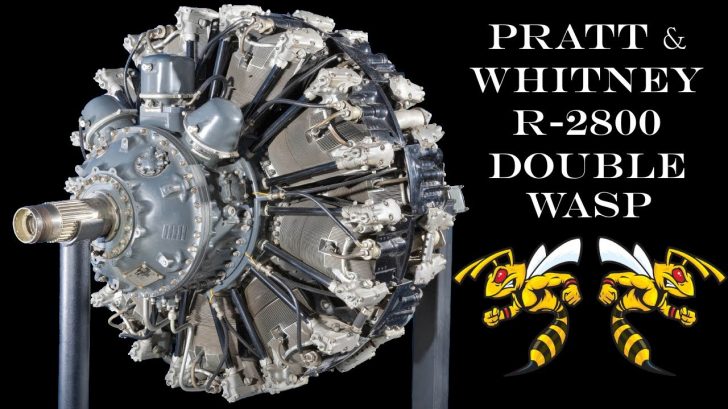The Pratt and Whitney R-2800 Double Wasp was one of the most significant technological advancements in aircraft engines during World War II. This powerful and reliable engine played a critical role in helping the Allies win the war, particularly in the Pacific theater.
Design Specifications
The R-2800 was a radial engine with 18 cylinders and was capable of producing up to 2,000 horsepower, which was significantly more than any other engine of its time. Its cylinders were arranged in two rows, one behind the other, with each containing nine cylinders – the name “Double Wasp” was taken from the engine’s layout.
The engine’s advanced design allowed for higher power output, while also reducing weight and improving durability. Pratt & Whitney would also continue to develop new ideas to upgrade the engine during the course of the war.
Early Cooling Problems
Cooling problems plagued the Double Wasp early in its development. It was relatively small in displacement for an 18-cylinder engine, so heat dissipation became a bigger problem.
To facilitate cooling, much thinner and closer-pitched cooling fins were made out of the cylinder head material, producing an intricate pattern over the cylinder heads.
Very Reliable
One of the many advantages of the R-2800 was its reliability. The engine was known for its durability and ability to operate in harsh conditions. This was especially important in the Pacific, where planes often had to fly long distances over the open ocean.
The engine’s reliability meant that Allied planes could undertake long-range missions with confidence, knowing that their engines were up to the task. In fact, planes would be able to return home with cylinders shot off – as long as the engine has its oil supply, it will work.
Powered Several Important Aircraft
The R-2800 was very versatile and could be used in a variety of aircraft. It powered many of the most iconic planes of the war, including the F4U Corsair and the P-47 Thunderbolt.
In 1940, the XF4U-1 (fitted with the R-2800) became the first US fighter to exceed 400 mph. Medium bombers like the P-61 Black Widow, A-26 Invader, and the B-26 Marauder would also use the Double Wasp during their service. After the war, airliners and cargo aircraft would also be fitted with the R-2800s such as the DC-6 and C-69 Constellation.
Importance In Tech
In addition to its military uses, the R-2800 was also an important technological advancement in aviation history. The engine’s design influenced many other engines that followed it, and it set the standard for radial engines for years to come.
After over 80 years since the Double Wasp first run, it is still used today around the globe.



